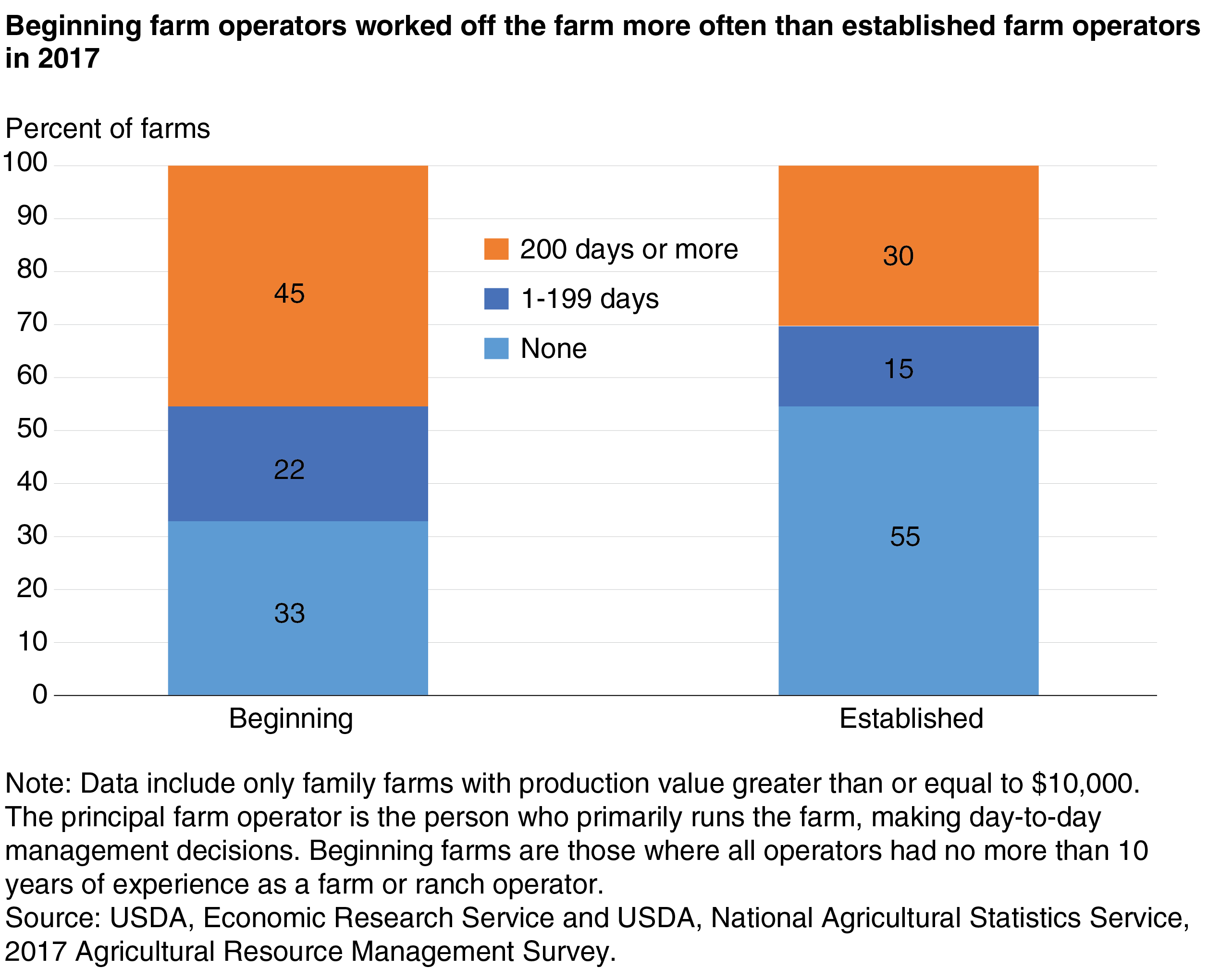
Beginning Farm Operators and Spouses More Likely To Work Off the Farm Than Established Counterparts
- by Nigel Key
- 2/3/2020
Beginning farms tend to be smaller than established farms, and their operators are often younger and more likely to work off of the farm. USDA’s Economic Research Service defines a beginning farm or ranch as one on which all operators have had no more than 10 years of experience as a farm or ranch operator. Beginning farms and ranches accounted for 17 percent of all U.S. operations and 8 percent of the value of agricultural production between 2013 and 2017. Between 2013 and 2017, about a third (33 percent) of beginning farms produced at least $10,000 worth of output, compared with almost half of established farms (48 percent). Among farms with at least $10,000 in production, principal operators of beginning farms were 43 years old on average, compared with 63 years old on average for operators of established farms.
Because beginning farms tend to be smaller than established farms, they require less farm labor and earn less net farm income. Consequently, members of beginning farm households are more likely to work off the farm. In 2017, 67 percent of beginning farm principal operators worked off the farm, compared with 45 percent of established farm operators. About 22 percent of beginning farm principal operators worked off the farm part time (1-199 days), compared with 15 percent of established farm operators. And 45 percent of beginning farm operators worked off the farm full time (200+ days), compared with 30 percent of established farm operators. The spouse of a beginning farm principal operator was also more likely to work off the farm. A spouse worked off the farm in 55 percent of beginning farm households, compared with 41 percent of established farm households between 2013 and 2017.
Beginning farm households tend to rely more on their off-farm income. Although beginning farm households earned almost as much total household income as established farms between 2013 and 2017, off-farm income represented a greater share of total income for beginning farms (77 percent) than for established farms (56 percent).
This article is drawn from:
- Lyons, G. (2019). An Overview of Beginning Farms and Farmers. U.S. Department of Agriculture, Economic Research Service. EB-29.
You may also like:
- ARMS Farm Financial and Crop Production Practices. (n.d.). U.S. Department of Agriculture, Economic Research Service.
- Beginning, Limited Resource, and Female Farmers and Ranchers. (n.d.). U.S. Department of Agriculture, Economic Research Service.
- Whitt, C., MacDonald, J.M. & Todd, J.E. (2019). America’s Diverse Family Farms: 2019 Edition. U.S. Department of Agriculture, Economic Research Service. EIB-214.
- Tulman, S., Higgins, N., Williams, R., Gerling, M., Dodson, C. & McWilliams, B. (2016). USDA Microloans for Farmers: Participation Patterns and Effects of Outreach. U.S. Department of Agriculture, Economic Research Service. ERR-222.


